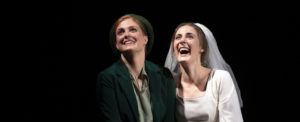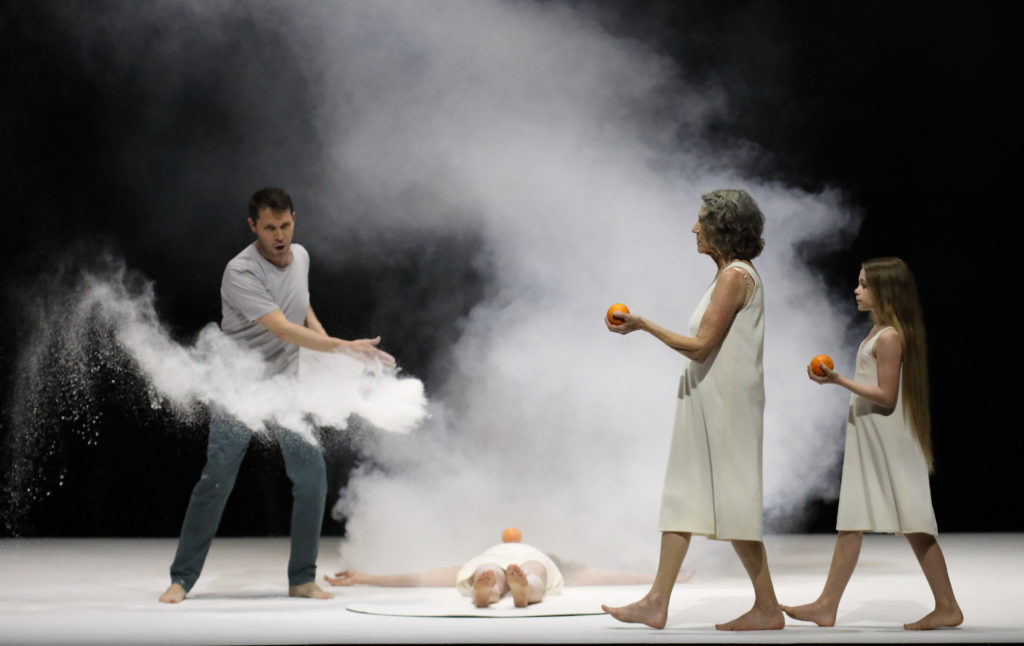
The Xen of Opera: The Treasures of the 2020 Adelaide Festival
By Xenia Hanusiak(Credit: James Glossop)
Opera is quivering, twisting, and turning. Could it be that we are in an opera renaissance? There is a new blood pulsing through its veins. Opera and theater makers are pulling at its heart, resuscitating our interest and taking us to diverse locations with as yet unclassifiable languages and forms. The Xen of Opera looks at the protagonists and projects that are moving the needle of opera and song. It is a monthly column that takes readers far and wide beyond the proscenium arch and writes about the influencers who are rewriting opera’s narrative across the globe. There is no prescription to its content: sometimes a snap shot, sometimes an idea, sometimes an observation, but always the song.
If timing and luck everything, the Adelaide Festival (28 February-15 March 2020), gathered its share. In Coronavirus timelines, the 2020 Adelaide Festival’s planning was nigh perfect. Just as the last word was spoken and the last note was sung, Australia began to close its theatres, concert halls and festivals. Remarkably, in view of the global pandemic, very few artists cancelled.
But, inevitably, as the festival progressed and as the virus began to take hold globally, circumstances changed. Conductor/composer Brett Dean withdrew from his performance with the Adelaide Symphony Orchestra after contracting the disease.
As Australia’s crown festival, the Adelaide Festival has morphed from a biennial to annual event. Situated in the country’s southern city, with a population of just over 1 million, you can easily walk from one end of the city to the next in close to ten minutes. Anyone who has visited the Edinburgh Festival and Fringe can appreciate how a city of this size can suddenly and intensely vibrate with one spectacular overdose of arts and culture, and then hibernate and recover until the next year.
This year’s Adelaide Festival is directed by the visionary team of Neil Armfield and Rachel Healy, who have guided the festival since 2017. The duo has been booked for another three years, marking their tenure as the longest record for this festival. Their success is noticeable for its super box office credits, buoyed by a curated program that understands its target audience.
The Adelaide Festival, like the Edinburgh is scheduled simultaneously with the city’s Fringe festival. So, like Edinburgh, audiences can experience extraordinary diversity–Laurie Anderson at the Fringe on one night and Tallis Scholars at the Festival on the other. From my observations of the attendances in Adelaide, there is a significant split down the middle between the two audiences: there is little cross-over.

(Credit: Tony Lewis)
A Rich Program
The Armfield-Healy Adelaide Festival program is rich in classical contemporary exposition. Audiences were fortunate to experience the Opera Ventures/ Scottish Opera production of Missy Mazzoli’s “Breaking the Waves.” Premiering at the Edinburgh Festival in 2019, this new Tom Morris-directed production shines a light on the morality and humanistic themes of the opera based on Lars von Trier’s Academy Award nominated film of the same name.
Decorated with a cast of shiny-voiced, intelligent, and thoughtful singers, with American soprano Sydney Mancasola leading the charge with her tour-de-force portrayal of the central character Bess, the achievement of this production rests on the collaboration of the creative team.
For its opening night centerpiece, this festival gave us Romeo Castelluci’s “Requiem” –a co-production between Festival d’Aix-en-Provence, Theater Basil, Wiener Festwochen, and Palau de les Arts Reina Sofia. This is a staging of Mozart’s “Requiem” that interpolates the mass with other liturgical settings by Mozart.
From the various interviews and program notes we learn that Castellucci’s intention is to recalibrate the Requiem not as a mass for the dead but as an antidote: a festival of living embodied in dance, joy, and community. So, the idea being, that if we feel the palpability of life, then we appreciate death more acutely?
The vision is worthy, but it is hindered by the slow meditative and metronomic pacing of the musical score, and the sombre singing of the soloists and singers.
In another large-scale event, the choral project 150 Psalms, devised by Netherlands Chamber Choir with a concept by Tido Visser invites ensembles to contribute to a vision that recognises the contemporary relevance of the 150 Psalms.
For this fourth iteration – the project was seen at the Lincoln Centre’s White Light Festival–the roster of choirs included Tallis Scholars, Netherlands Chamber Choir, Norwegian Soloists’ Choir, and Australia’s The Song Company. The project allowed us to hear some of the world’s most musically adept choral ensembles.
Dutch composer Michel van der Aa made his impression with his virtual reality installation “Eight.” Audience members are led one by one for a fifteen-minute promenade through a virtual landscape of environments from forests to lakes. We are led by a virtual princess (sung in a recorded track by Australia’s pop singer Kate Miller-Heidke). She looks a little too much like a Disney character. I am thinking of “Frozen’s” Elsa.
The experience is not as transporting as you wish. The combination of Miller-Heidke’s icy vibrato-less voice, and the loose dramaturgy of the story line, together with the Disney effect, left me thinking about the work’s intention but marvelling at the execution of the creative technology in the making.
Buggul: an orchestral staging of the music of Gurrumul Yunupiŋu’s final album united the symphonic sounds of the Adelaide Festival Orchestra with Yolŋu dancers, songmen, directed by Senior Yolngu Don Wininba Ganambarr, and Nigel Jamieson. It was a respectful and elegant communion that invited us to appreciate Indigenous ritualistic performance in collaboration with the western European traditions. The extraordinary dancing from the Yolŋu dancers was a highlight.
Categories
Special Features

